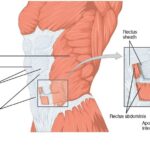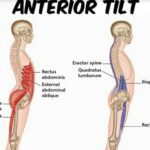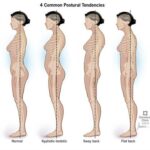I’m sure you have, by this point, heard of the importance of electrolytes in hydration and replenishing what your body loses through sweat while training, but the importance of electrolytes goes much further than that. An electrolyte is a soluble inorganic compound whose ions will conduct an electrical current in solution (such as water which composes roughly 60% of the adult human body). The basic electrolytes and perhaps the most important found in the body are Sodium (Na+), Potassium (K+), Calcium (Ca2+).
Let’s start with Sodium, sodium is very important to many functions of the body including blood volume, membrane function, nerve impulses and muscle contraction. Potassium is also involved in proper membrane function, nerve impulses and muscle contraction. Calcium is found in bones and teeth, important in proper membrane function, nerve impulses, muscle contraction and blood clotting.
The walls of our neurons (nerve cells) are composed of a membrane called the plasma membrane, this membrane separates the extra cellular fluid (ECF) from the intracellular fluid (cytosol). These cells are responsible for transmitting electrical signals throughout the body so they must be able to carry a charge. These cells have what’s called a resting membrane potential, the average resting membrane potential of -70mV (millivolts). This negative charge in the cytosol of the cell is maintained by a very complex system of sodium leak channels, potassium leak channels, sodiumpotassium exchange pumps, negatively charged proteins and electrolytes such as positively charged sodium and potassium and negatively charged chloride (Cl-). When acted upon by a strong enough stimuli, sufficient to bring the internal charge of the cell from -70mV to about -60mV, something called an action potential takes place, which triggers the cell to continue depolarization to +30mV. This process then triggers the activation of the next cell (action potential propagation) and this is basically a simplified example of how neurons transmit signals throughout the body, such as telling a muscle to contract.
![[1]](https://images.squarespace-cdn.com/content/v1/568c1797df40f37b331c4d04/1538998337235-ZSF779BGOK9NT5NMAQW2/Picture1.png)
[1]
Muscle contraction likewise is a very complicated process that is reliant on electrons. In the contraction of muscle, the sarcomere (smallest contractile unit of muscle) skeletal muscle contracts when stimulated by a motor neuron, this stimulus arrives in the form of an action potential at the neuromuscular junction. This action potential causes a chain of events leading to excitation, which is the action potential of the sarcolemma (the plasma membrane of the muscle cell) this triggers the release of the Calcium from the sarcoplasmic reticulum (a membrane surrounding the sarcomere) this Calcium interacts with components of the sarcomere causing the sarcomere to shorten, resulting in muscle contraction. Cardiac muscle goes through a similar process but differs in the terms of the nature of the action potential, the source of the calcium and also the duration of the resulting contractions.
![[2]](https://images.squarespace-cdn.com/content/v1/568c1797df40f37b331c4d04/1538998395340-KR1CYPG5VPFUZRS34NWT/image-asset.png)
[2]
Calcium is also involved in the process of blood clotting. In this process calcium is an important element in the extrinsic pathway (outside of the blood vessel) and the intrinsic pathway (inside the blood vessel). Calcium combines with other clotting factors that ultimately ends in the transformation of fibrinogen (a soluble protein in the plasma of blood) into fibrin (insoluble strands) which bind with platelets in the blood to create the clot.
![[3]](https://images.squarespace-cdn.com/content/v1/568c1797df40f37b331c4d04/1538998457172-NU5WQKU5C10MWC17D06A/Picture3.png)
[3]
Now it is very important to maintain proper levels of these electrolytes in your system so that these functions can occur properly, but that does not mean that you should take handfuls of electrolyte supplements to maintain them. The recommended daily intake (DRI) of Ca for adults ranges from 1000mg to 1200mg per day, but it has an upper limit (UL), which is the point at which it can become toxic, of 2000-2500mg for most adults. The DRI for Na ranges from 1200-1500mg per day with a UL of around 2300. The DRI for K is 4700mg but it does not have a UL because it is not known to cause any negative effects on the body when taken in higher concentrations than suggested. (these levels are averages for the general population and can differ depending upon the amount of activity an individual participates in throughout the day).
Image retrieved October 2018 from the following website:
- http://nfassignmentaoxh.digiarea.us/resting-membrane-potentials.html
- https://anatomybodydiagram.com/muscle-contraction-diagram/muscle-contraction-diagram-the-muscular-system-micro-and-macro-anatomy-2/
References:
- Fundamentals of anatomy and physiology 11th edition by Martini, Nath & Bartholomew
- Nutrition science and applications 4th edition by Smolin &Grosvenor
This article/video is for educational purposes only; do not attempt without your physician’s clearance. If you are in pain or injured, see your physician.
Copyright © Vidal Sports LLC 2018







